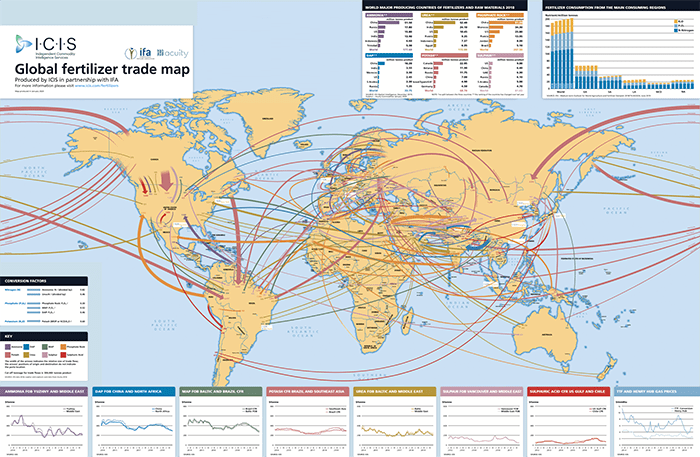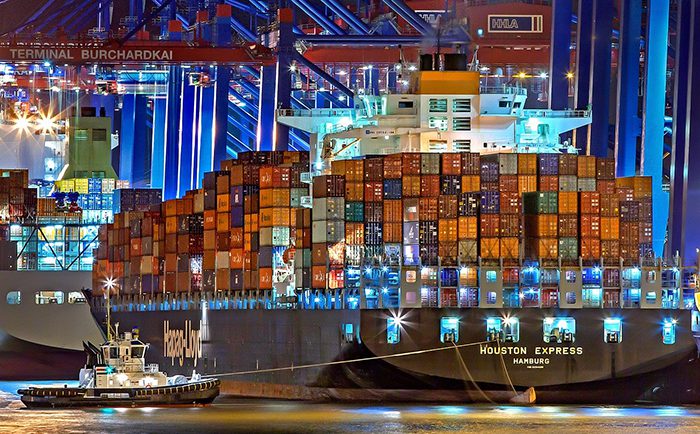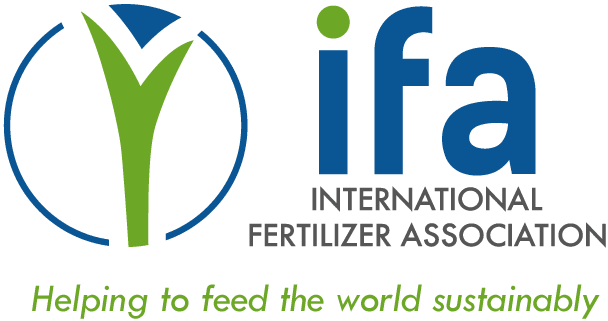Coronavirus Fertilizer Production Disruptions and Support Measures: Lessons learned from China
By providing precise and consistent nutrients to plants, fertilizers are crucial for increasing yields on existing farmland, improving soil carbon sequestration, protecting wild ecosystems and ensuring global food security. Amid the current trade restrictions, food stockpiling and economic disruption of the COVID-19 crisis, maintaining access to fertilizers is more important than ever for assuring that farmers will be able to produce enough crops in the coming seasons, keeping food prices affordable.
The global fertilizer supply chain is very complex and requires large volumes of fertilizers and raw materials to be moved across the globe. With an estimated global fertilizer demand of around 190 million tonnes (nitrogen, phosphorus and potassium, expressed in nutrients), some of the key questions today are how the COVID-19 pandemic will affect the supply of this key crop input and to what extent the demand of fertilizers might be affected due to macroeconomic volatility and widespread disruptions across the wider supply chain, affecting transportation, distribution, international trade flows, and inventory levels.

IFA/ICIS Global fertilizer trade map (an interactive version is available here)
Producing fertilizers is a complicated industrial process, often requiring imported raw materials and using a variety of nutrients. With many countries lacking their own production facilities and major deposits of key nutrients (such as potash) in a limited number of countries, a large share of the global fertilizer production is exported to other countries. International trade often represents a significant share of the overall output: for example, up to 78% of potassium chloride and 54% of diammonium phosphate fertilizers produced in the world are traded internationally. The production of fertilizers also often depends on the international trade of raw materials and intermediate products, such as natural gas, ammonia, phosphoric acid and sulphur.
While it is too early to assess the extent of the impact of COVID-19 on the fertilizer supply chain globally, we can get some preliminary insights by looking into what has happened in China, the world’s largest fertilizer producer and consumer of fertilizers, which seems to be two to three months ahead of the rest of the world in terms of experiencing the direct effects of the pandemic.
The main disruptions experienced by the fertilizer industry in China included: shortage of labour (drivers, plant and port workers and others); reduced operating rates at fertilizer manufacturing facilities; temporary plant closures; inland logistics bottlenecks (mainly affecting trucks due to blocked roads and districts); overstocks at port warehouses; high inventories at production sites; delays at port terminals; a tight supply of raw materials; and tight funding. Exports and imports of fertilizers and fertilizer raw materials in China were also disrupted due to multi-fold impacts across the entire fertilizer supply chain.
While the current situation will of course affect other countries differently, many of the reported disruptions in China are also likely to be experienced elsewhere. The positive news is that many of these disruptions are being eliminated in China thanks to the multiple support measures issued by the government, with fertilizer production being gradually restored, ensuring sufficient domestic supply of fertilizers for the spring planting season as a priority, and import and export logistics recovering.

Although logistics have recovered in China they remain disrupted elsewhere
Again, it can be useful to look at the measures that have been put in place to support fertilizer production, transportation, distribution and application in China. The government prioritized securing necessary raw materials supplies, offered temporary reduced natural gas and electricity prices for fertilizer producers, and granted loans to fertilizer companies. To restore fertilizer transportation, highway tolls for truck transportation have been removed and fertilizer logistics have been fast-tracked. Lastly, to ensure fertilizer demand, fertilizer credit support has been provided for the spring season, domestic fertilizer supplies have been prioritized and famers encouraged to plant double crops of rice.
There are, however, still some ongoing challenges in China and the situation varies from province to province. Some export-orientated fertilizer producers in China are expressing concerns over the potential reduction of demand from the international market due to the impact of COVID-19 elsewhere. The spread of quarantine measures, and in some instances of announcements of force majeure, at exporting and importing port terminals across the world is likely to disrupt the “normal” cycle of the supply chain of fertilizers, the application of which is also dependent on other factors, such as climatic conditions and seasonality, when timing can play a crucial role.
Although the full impact of the economic downturn and effects of quarantines on the global demand for fertilizers remains to be seen, support measures provided by national governments and local authorities (see our other article on the subject for more information) are attempting to mitigate the adverse impact on the functioning of the agricultural sector, food supplies and food security, where fertilizers play an integral part as core inputs.
To help achieve this, IFA members are instigating special procedures to protect their employees, limit disruptions caused by COVID-19, ensure raw material supplies and safeguard their products. In order to continue to ensure food security during this unprecedented period, IFA is calling on all governments to urgently work with the fertilizer industry to introduce adequate measures to support global fertilizer production and distribution, as well as the farmers who rely on them.

